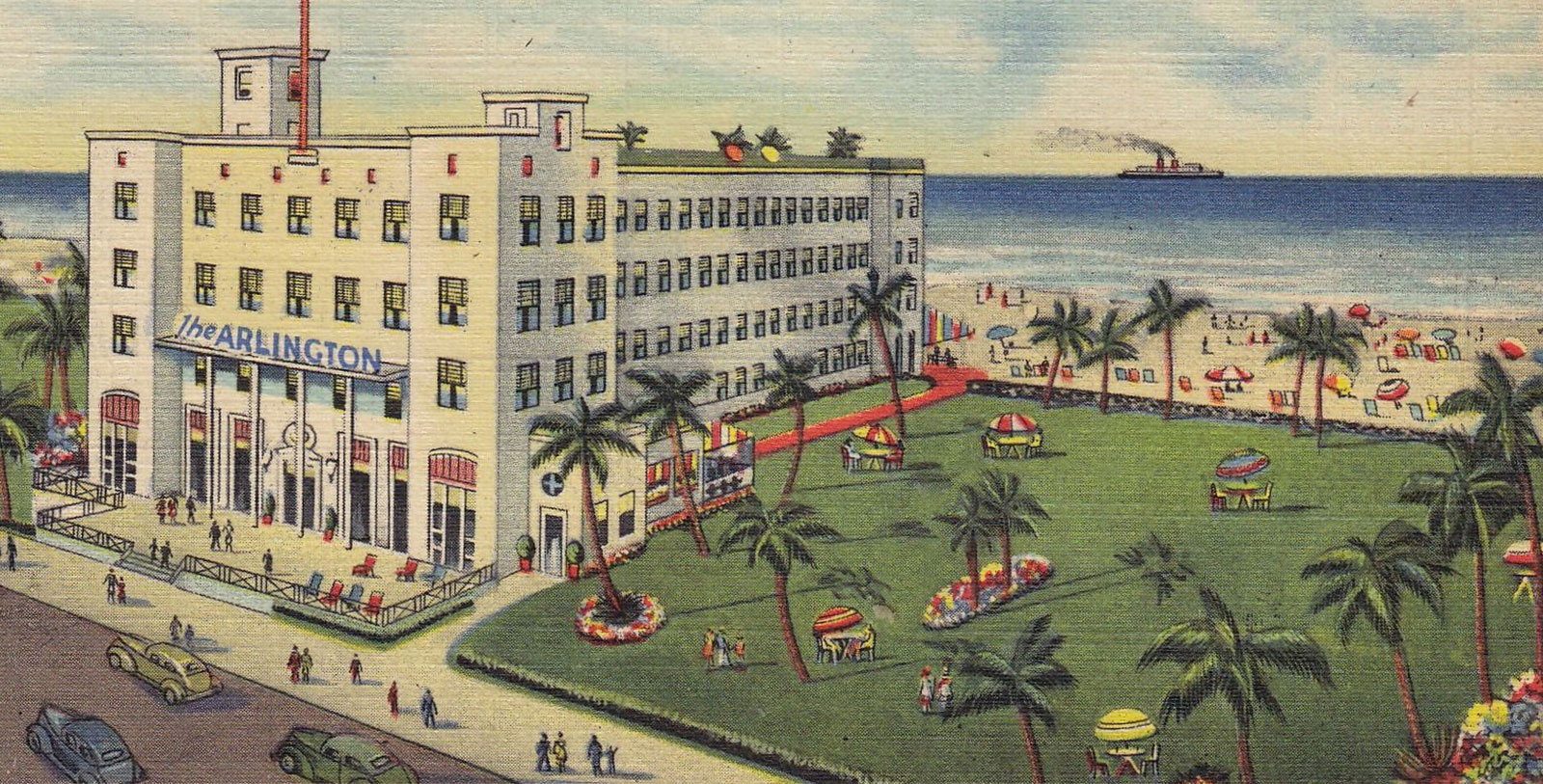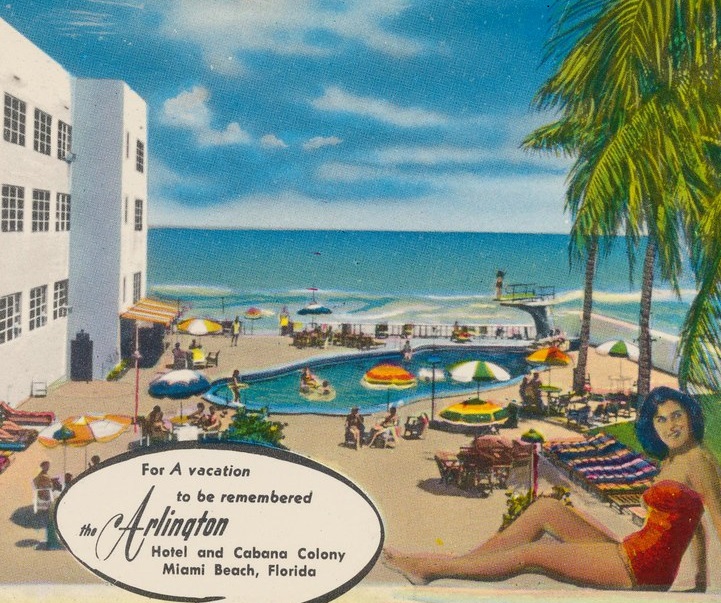Receive for Free - Discover & Explore eNewsletter monthly with advance notice of special offers, packages, and insider savings from 10% - 30% off Best Available Rates at selected hotels.
history
Discover the world-class hospitality of The Savoy Hotel & Beach Club, which is just moments away from the renowned Miami Beach Architectural District.
The Savoy Hotel & Beach Club, a member of Historic Hotels of America since 2020, dates back to 1935.
VIEW TIMELINELocated mere moments from the heart of the Miami Beach Architectural District (also known as the Old Miami Beach Historic District or the Miami Beach Art Deco Historic District), The Savoy Hotel & Beach Club is among Miami Beach’s most historic vacation venues. Originally known as the “Savoy Plaza,” The Savoy Hotel and Beach Club was one of several hundred beachside getaways that appeared throughout the city shortly before the start of World War II. By this point, thousands of Americans had descended upon Miami Beach as their preferred holiday retreat for several years. This followed in the wake of the successful advertising campaign from the likes of the area’s early hoteliers like Carl Fisher and the Lummus brothers. Like most of the hotels that appeared in Miami Beach in the middle of the 1930s, the hotel debuted with some of the finest Art Deco architecture in the entire country. And like many of those structures, it was much smaller in scale than some of its more historic neighbors a few blocks to the north. This was in direct response to the dualistic financial hardships wrought from both the Great Miami Hurricane and the Great Depression, which modified the way local hoteliers desired to construct their venues.
Nevertheless, the Savoy Plaza was among best holiday attractions located along the southern end of South Beach—one of Miami Beach’s most exclusive neighborhoods. Thousands of America families continued to vacation throughout Miami Beach over the next several decades, even as the country grappled with a massive economic depression and a global war. As such, the Savoy Plaza played a direct role in transforming Miami Beach into the world-renowned holiday destination that it is currently today. But, while many of those neighboring businesses closed their doors over the course of the 20th century, The Savoy Hotel endured for its ability to offer a luxurious travel experience unlike no other. In 2012, developers combined The Savoy Hotel with another 1930s-era structure known as the “Arlington Hotel,” which had been originally designed by architect Albert Anis. This beautiful building greatly expanded The Savoy Hotel’s room count all while preserving its grand historical character. Having just completed an ambitious restoration project in 2018, this fantastic location is now destined to entertain many more generations to come.
-
About the Location +
The history of Miami Beach is a rather spectacular tale, starting with a failed coconut farm on the outskirts of Miami Beach. Long considered to be a marshland of little value to most real estate moguls, land speculator Henry B. Lum decided to take a chance on developing the sand bar opposite of Miami. He specifically noticed a few pal trees growing along its shoreline and believed it to be the perfect place to cultivate coconuts. In 1881, Lum gathered a group of northeastern investors to help him start his nascent coconut farm. Lum and his associates quickly attempted to plant some 334,000 palm trees in an orderly manner, although they soon gave up and planted them in an increasingly irregular pattern. His team had even resorted to throwing coconuts into the water and allowing them to drift aimlessly back to shore as a way to plant the trees. But the combined effects of the coconut’s long germination period and the state’s inhospitable climate for largescale coconut horticulture quickly made Lum’s project a financial calamity. By 1889, Lum and his family—who had moved out to the sand bar—decided to abandon the whole venture.
Yet, one of Lum’s partners—John S. Collins—had not given up on the endeavor. In 1896, Collins left his native New Jersey for Florida in order to revive Lum’s coconut reserve. An avid horticulturalist, he was committed to salvaging Lum’s project in some way. Upon arriving to the sand bar, Collins noticed something peculiar about the spot. Pine and palmetto trees had sprung up not too far from Lum’s former coconut farm, revealing that the area had access to a wealth of freshwater. He quickly realized that smaller, citrus plants would thrive at the location, and spent the next ten years acquiring the land for such an endeavor. Collins specifically dreamed of growing avocados for its market in the United States was virtually non-existent. But a serious logistical problem soon emerged in that it would be incredibly difficult for the New Jerseyite to transport his produce across Biscayne Bay. To resolve the situation, Collins immediately began developing a massive wooden bridge. Unfortunately, he exhausted all of his available money right before the bridge was completed.
The mammoth construction project was rescued by Carl Fisher, a prominent vehicle parts merchant from Mississippi who had relocated to Miami upon the suggestion of a friend. Impressed with Collins’ tenacity, Fisher loaned the aging farmer some $50,000 to finally finish the bridge. But Fisher had an ulterior motive for helping Collins. Taking heed of the sand bar’s tranquil location along the Atlantic coast, he believed that it was a brilliant spot to develop as a luxurious holiday retreat. Fisher formed the Alton Beach Realty Company, which subsequently flattened the western half of the sand bar that Collins had yet to plant. Some of the earliest roads appeared, giving what would become Miami Beach its first street grid. By 1915, Fisher had opened a spectacular hotel, as well as two accompanying office buildings and a personal villa that cost him $65,000 to construct. The City of Miami Beach was born.
Throughout the 1920s and 1930s, Carl Fisher continued to champion the development of Miami Beach as a prestigious vacation getaway. A master publicist, he successfully advertised the serene qualities of the area before a national audience. Fisher even sponsored the creation of the Miami Beach News Bureau to push stories of the area’s tropical appeal. Soon, countless hoteliers flocked to the region to open their own establishments along Miami Beach’s gorgeous coastline. They, in turn, hired renowned architects to design their impressive venues, such as Henry Hohauser, L. Murray Dixon, and Albert Anis. Some of the earliest structures reflected Mediterranean architectural influences, although they gradually gave way to the sleeker Art Deco design principles that swept through the nation at the height of the Roaring Twenties. At first, the city sported a variety of massive hotels. Those gradually gave way to smaller, more durable stucco buildings in response to both the Great Miami Hurricane and the financial hardships of the Great Depression.
Nevertheless, Miami Beach resembled a city as prominent as its neighbor directly across the bay. America’s entrance into World War II briefly stopped Miami Beach’s initial wave of commercial development, though. The war also marked the end of the proliferation of Art Deco architecture throughout the city, signaling the beginning of a new era in Miami Beach. But when droves of American G.I.s returned home en masse in the late 1940s, the local travel industry surged once more. The neighborhood of South Beach especially became the center of attention among local travelers, making it the most exclusive district within the city. Miami Beach has since become one of the nation’s most luxurious holiday destinations. It has access to stretches of warm white sand and azure water. Countless celebrities frequent the city while on vacation, and some of the finest restaurants and storefronts call the area home. Truly, few places are better for a relaxing trip than Miami Beach.
-
About the Architecture +
The Savoy Hotel & Beach Club is among the most historic destinations in downtown Miami Beach, having been founded in 1935. Like many of its fellow historic structures from the same period, the facility displays a brilliant combination of Art Deco-style architecture. Designed by architect V.M. Neillenbogen, the hotel featured a unique type of Art Deco architecture that was more modest in tone and smaller in scope. Following the local financial hardships wrought by both the Hurricane of 1926 and the Great Depression, hoteliers throughout Miami Beach sought to open smaller venues with less accommodations. Most of the architectural developments in the southern end of Miami Beach—known as South Beach—reflected this change in perception. Yet, the hotels that opened in the wake of the two events were no less charming than their forebearers, for they still provided for an unrivaled holiday experience. The U.S. Department of the Interior has even grouped most of the surviving Art Deco structures in South Beach within the greater Miami Beach Architectural District, due to their rare architectural homogeneity. In recent years, the facility was merged together with another historic building—the Hotel Arlington. Designed by reputed Chicago-based architect Albert Anis, the building possessed similar Art Deco stylings as the Savoy. (Anis had developed a number of high-profile buildings throughout Miami Beach, including The Mantell Plaza, the Avalon Hotel, and the Clevelander Hotel.) Both destinations now proudly form the nucleus of today’s Savoy Hotel & Beach Club.
Art Deco architecture itself is among the most famous architectural styles in the world. The form originally emerged from a desire from architects to break with past precedents to find architectural inspiration from historical examples. Instead, professionals within the field aspired to forge their own design principles. More importantly, they hoped that their ideas would better reflect the technological advances of the modern age. As such, historians today often consider Art Deco to be a part of the much wider proliferation of cultural “Modernism” that first appeared at the dawn of the 20th century. Art Deco as a style first became popular in 1922, when Finnish architect Eliel Saarinen submitted the first blueprints to feature the form for contest to develop the headquarters of the Chicago Tribune. While his concepts did not win over the judges, they were widely publicized nonetheless. Architects in both North America and Europe soon raced to copy his format in their own unique ways, giving birth to modern Art Deco architecture. The international embrace of Art Deco had risen so quickly that it was the central theme to the renowned Exposition des Art Decoratifs in Paris a few years later. Architects the world over fell in love with Art Deco’s sleek, linear appearance defined by a series of sharp setbacks. They also adored its geometric decorations that featured such motifs like chevrons and zigzags. But in spite of the deep admiration people felt toward Art Deco, interest with the style gradually dissipated throughout the mid-20th century. Many examples of Art Deco architecture survive today, with the largest gathering of buildings located in the Miami Beach Architectural District.




































